In the first cleanup project made possible by the Great Lakes Legacy Act, EPA and the Michigan Department of Environmental Quality worked together to remove 115,000 cubic yards of polluted sludge from Black Lagoon inlet on the Detroit River. The $9.3 million project cost was shared between EPA (65 percent) and MDEQ’s Clean Michigan Initiative funds (35 percent).
The Black Lagoon lies within the U.S. Fish & Wildlife Service’s Detroit River International Wildlife Refuge, the first international wildlife refuge in North America.
Dredging of the polluted mud began in October 2004 and took thirteen months. The sediment was dredged out of the lagoon and the sludge was solidified before being transferred by truck or barge to the Pointe Mouille Confined Disposal Facility. The bottom of the dredged lagoon was covered with 6 inches of sand and 3 inches of stone to protect fish and wildlife from any remaining contamination in the river mud.
Since the Remediation
- Trenton received a $151,000 grant to restore a natural shoreline on the Black Lagoon. This work was completed in 2006.
- In June 2007 the site was renamed “Ellias Cove” in honor of the family who donated the adjacent land to Trenton that became Meyer-Ellias Park.
- Trenton recieved a $582,000 Boating Infrastructure Grant from U.S. Fish & Wildlife Service to build a marina and further economic revitalization of downtown Trenton.
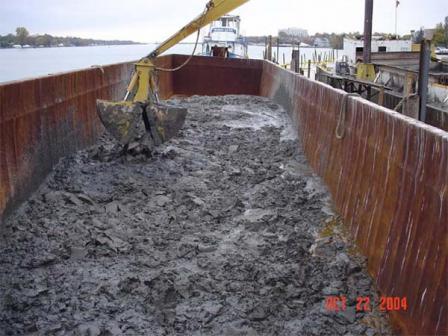
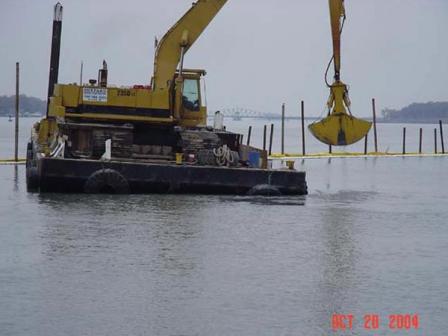
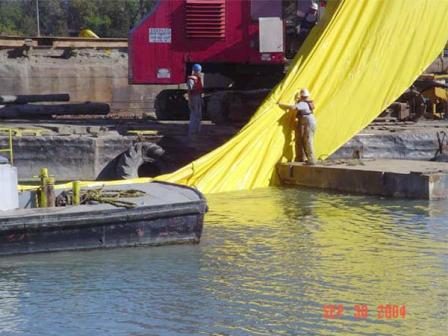
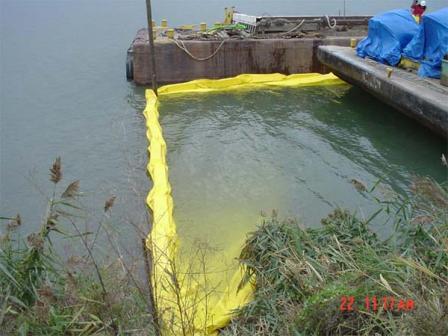
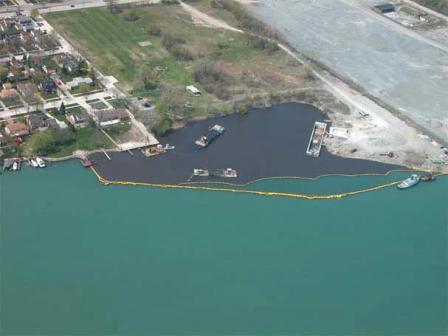
- Remediation of the Black Lagoon Project Report (PDF)(86 pp, 967 K, March 2009)
-
First Legacy Act Cleanup Completed (PDF)(2 pp, 433 K,
November 2005)
More than 470,000 pounds of contaminants were removed over the past 13 months from the Black Lagoon inlet on the Detroit River, completing the first cleanup project made possible by the Great Lakes Legacy Act.
-
Black Lagoon Project Agreement between EPA and MDEQ (PDF)(12 pp, 91 K,
December 2004)
Project Agreement Between the U.S. Environmental Protection and the Michigan Department of Environmental Quality
-
Dredging Project Set to Start; Legacy Act Funding a First (PDF)(2 pp, 462 K,
September 2004)
Work is about to begin on the removal of about 90,000 cubic yards of polluted sediment (mud) from Black Lagoon. EPA and Michigan Department of Environmental Quality will jointly oversee this $6.5 million project.
